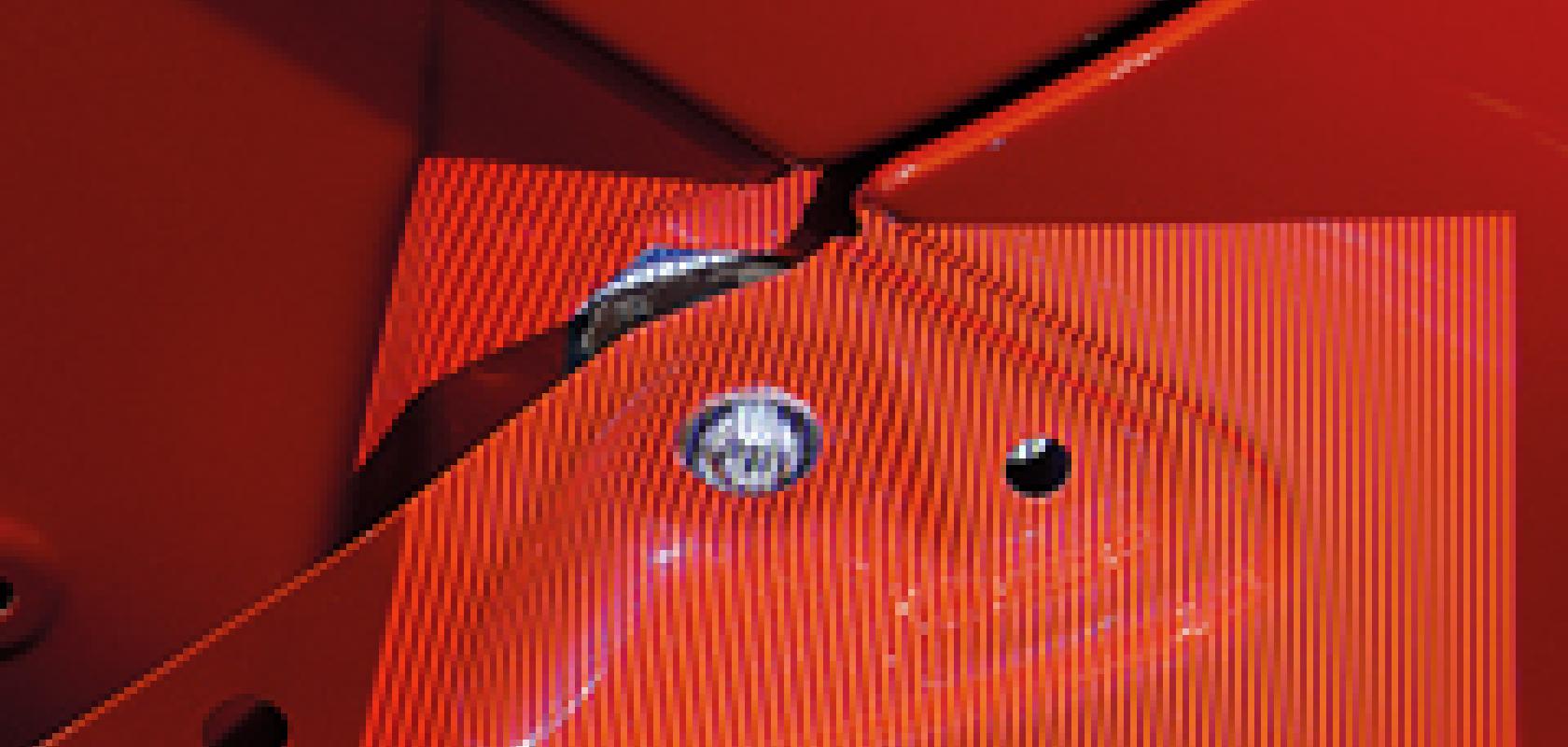Quality means different things to different people. The Oxford English Dictionary defines quality as the degree of excellence of something, but in manufacturing ‘fit for purpose’ could be an alternative meaning – a quality product is one that works as intended with the minimum number of faults. Another definition is: does the product meet or exceed customer expectations? The ISO 8402-1986 standard defines quality as ‘the totality of features and characteristics of a product or service that bears its ability to satisfy stated or implied needs’.
Manufacturers put a lot of effort into ensuring the quality of their products – recalls can be costly and potentially damaging to the company’s image – and machine vision has a big role to play here. Now that vision systems are becoming less expensive, more reliable and easier to use, they are more widely accepted in factory production. Ninety per cent of machines made by US factory automation solutions provider, ATS Automation, use some form of machine vision, according to Steve Wardell, director, imaging at the company. ‘Some machines can have upwards of 10 to 20 different inspection stations built into them,’ he said. ‘Half of those stations at least are typically associated with some sort of quality control.’
Incoming parts are normally examined with imaging to check dimensions, surface features and for any defects like cosmetic blemishes. The components are also inspected from a physical, form, fit, and function perspective, so that they fulfil their intended purpose when they go into the overall assembly, explained Wardell.
Vision is used throughout the assembly process to determine whether the parts are set up properly, and to guide the automation. If three or four components are fitted together, that composite part will also be inspected. Then there is a final quality control check.
ATS Automation makes a lot of assembly systems that put together parts around the size of a breadbox. These systems therefore work with fairly small components. Normally they’re fed in through a bulk feeder, and are either inspected as they pass into the system or in a separate station, depending on the measurements that need to be made.
‘We do see more acceptance of vision feedback in some of the areas where machine vision wasn’t always standard usage,’ commented Wardell. He gave the example of part feeders incorporating various different sensing technologies to give constant throughput.
‘More often, on bowl or flex feeders, you’re starting to see vision sensor technology used instead of simple through beams or proximity sensors,’ he continued. ‘A vision system will give more information and maybe find three of four things with a single system, compared to using three or four different sensors. Therefore the size of the feeders and the overall footprint of the machine can be reduced, as well as the cost of the system. Machine vision can help to make a robust solution that’s fairly low cost.’
The majority of the ATS’s work is standard 2D inspection. It does do some 3D imaging, for instance checking to see if a bead of adhesive has been properly applied before joining two components together.
‘If we’re building a robust system, the main theme is to keep it as simple as possible,’ Wardell said. ‘When we start diving into the 3D realm or more extravagant types of inspection technologies, that just increases the potential for errors. We only go along that route when that’s our only option.
‘Usually in a lot of applications, if you get the lighting installed correctly and use the proper optical set-up, you can still get tonnes of information from 2D images, which serves our purpose for 95 per cent of applications.’
Illumination can be the difference between good and bad images. ‘The imaging set-up won’t work without a good lighting foundation,’ stated Paul Downey, marketing manager at machine vision illumination supplier, Gardasoft. ‘If the lighting is inconsistent or inaccurate, that will ripple its way through what the camera sees and what the image processing is able to work on.’
Gardasoft provides lighting equipment for metrology system makers, with most of the machines incorporating multiple lights for different types of examination. One of its customers developed a dome light split into quadrants with 32 different light segments at different heights. This gives different angles of illumination, which supplies more information about the geometry and surface features of the part. The Gardasoft lighting controller triggers each of the 32 segments and the camera, and can take 32 images by firing each light within a millisecond.
Gardasoft has customers in PCB inspection that have been using this kind of multi-angle lighting system for years. ‘With a lighting controller, [setting up such a system] becomes much easier, because you can switch between lights and trigger the camera for each light,’ explained Peter Bhagat, CEO of Gardasoft. ‘It gives you a nice solution where the system pulses all the lights and tells the camera when to take an image. Because it works within our controller, it all works very quickly.’
Repeatability in the image data is another criterion that Bhagat said is important for metrology system makers. One of Gardasoft’s US customers building microscope systems for metrology wanted repeatable light levels with only 1.5mA going into one light, while, on the same controller, switching a different light on at 700mA. This also requires good current resolution, the resolution of the current steps supplied to the light.
‘In these sorts of metrology systems you need to be able to go back to a previous measurement,’ Bhagat said. ‘There’s no point in doing a measurement and then not being able to repeat it, which sometimes can be light-level dependent.’ Gardasoft’s digital controllers have less than a milliamp step resolution, which is fine enough to return to exactly the same light set-up used in a previous test. ‘Using other lighting controllers with coarse resolution can introduce variability in the light output, because the steps in current supplied to the light are quite large,’ stated Downey.
Measuring in 3D
The attributes of 3D imaging single it out for specific quality control inspection tasks, such as surface topology or determining the dimensions of holes in a part. Wolfgang Berggold, business manager at Isra Vision’s 3D Shape division, commented that 3D imaging is used in cases where 2D information is not enough. ‘The nice thing with 3D information is that you can export a point cloud, and then there is often no need for a big interface for PLCs – you normally only need a trigger and a command to get the results,’ Berggold said.
Isra Vision will be exhibiting products from its 3D Shape group at the Control quality assurance trade fair in Stuttgart, which runs from 26 to 29 April (see panel for other exhibitors). These include: white light interferometers, for very precise tasks such as inspecting automotive engines; deflectometers, more suited to making measurements on specular surfaces or highly reflective surfaces; and triangulation sensors, ideal for inspecting foundry or forged parts.
‘3D is usually the more expensive solution,’ Berggold noted. ‘There is a trade-off with cost. Normally whatever [measurement technique] gets good enough results is the winner.’
As 3D systems come down in price and become easier to use, the application of the technology will only grow. LMI Technologies now supplies smart 3D sensors, which include onboard image processing and are designed to make 3D vision more accessible to a wider audience.
Ease-of-use is an important aspect of setting up any vision system. ‘When you are building a complex system with more than 32 different light settings and different cameras, that’s a complex thing to do on site when you are under pressure,’ commented Downey at Gardasoft. ‘Purely from a timing point of view, ease-of-use kicks in again, and then from a maintenance point of view afterwards when the system is up and running. You want it to be easy to interrogate the system for any faults.’
‘There are a lot of advances in the vision sensor realm at the moment,’ commented Wardell at ATS Automation. ‘Many machine vision cameras are at a price point and programming point where they can be put in a system easily without having a lot of knowledge about engineering a complete vision system.’
He continued: ‘There still needs to be good optical design and good practices when putting a vision system into place. There was a time when a customer didn’t want to see a camera on a system, because they weren’t robust; it was hard to put them in place and make them a solution that people saw the benefits of. Now, people see the benefits by default, and so they want cameras everywhere, including a lot of places where you don’t need them. Sometimes a simple through beam sensor will do the job, and it’s only $50 instead of $500.’
Wardell added that, as the technology advances and the areas in which vision can be applied get broader, the top-end applications still require a lot of design and development, and proper optical setup. He said that ATS Automation’s primary goal when building any vision system is a solution that’s robust and will give repeatable results.
‘I see a lot of systems installed by people who can put them in because they’ve been made so simple, but still don’t necessarily take into account the proper image setup design for a robust system,’ he said. ‘It’ll work, but it’ll only work 80 per cent of the time instead of 99 per cent. You get to a point where it becomes a drain on the system rather than a benefit, and so it just gets turned off.
‘That’s one of the challenges I see with vision systems in general: as they become more acceptable in industry and easier to use, you see more people applying them but not necessarily with the best practices. They’ll learn, that’s how things are when you start out, but we still strive to get quality, robust solutions, and that’s where working with a vision integrator is beneficial, because you get a good solution at the end.’
ATS Automation operates a lot in the health sciences area, assembling medical devices and pharmaceuticals, which have to meet strict quality regulation. There’s still a lot of manual inspection involved because of those quality requirements, Wardell noted.
‘I am seeing a shift from the manual to automatic because the advances in the vision technology are such that the capabilities are matching those of the human operator now, and doing it with repeatable results,’ he said.
Humans have high cognitive abilities to be able to determine whether something is good or bad, but introduce a lot of variability into a system. Wardell concluded: ‘With machine learning systems now a lot of the cognitive abilities are starting to be taught in the machine vision realm. That’s one area where we’re looking at opportunities and trying to tie together the best of both worlds.’


